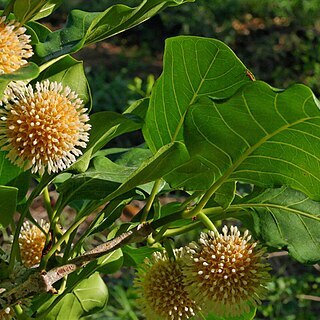Medium-sized to large trees. Terminal vegetative buds strongly flattened. Leaves opposite, petiolate, the nerve-axils with or without domatia; stipules ovate, obovate or elliptic, flattened, adpressed, deciduous or ± persistent. Inflorescences terminal or terminal and lateral with unbranched axes; nodes with reduced leaves and stipules not modified into bracts which surround the young inflorescence; true peduncle glabrous or pubescent, elongating. Flowers 4–5-merous, calyx glabrous or pubescent inside; limb-tube developed or not; lobes triangular or oblong, obtuse, with or without persistent appendages. Corolla-tube funnel-shaped; lobes oblong, imbricate. Stamens inserted in the throat, exserted; filaments short, glabrous; anthers basifixed, introrse. Ovaries entirely fused to each other, 2-locular, the placentas attached to the upper third of the septum, Y-shaped with 2 short ascending arms and long basal one; ovules numerous in each locule, mostly pendulous, some erect or horizontal but these mostly aborting; style exserted; stigma spindle-shaped. Fruits indehiscent, connate into a fleshy syncarp. Seeds ovoid or ellipsoid, sometimes compressed, not winged.

